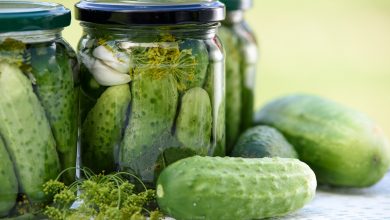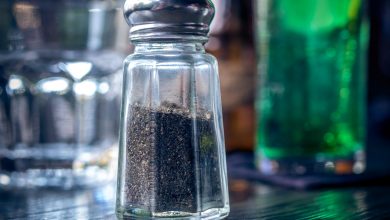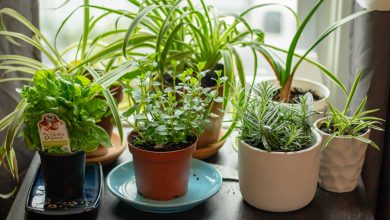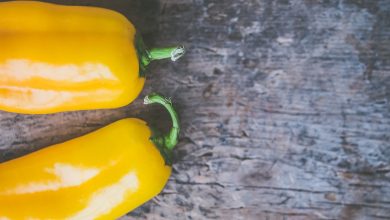Planning A Successful Vegetable Garden
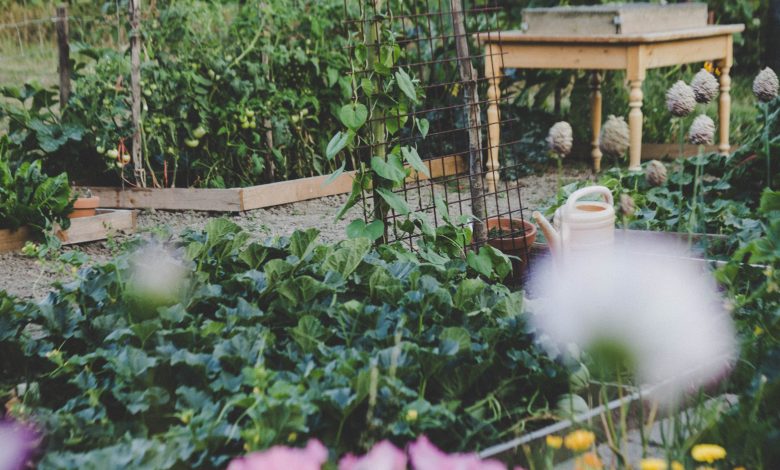
There is a movement taking place to start growing vegetables at home. With the rising cost of food and living expenses, planting a food garden can help keep those dollars in your pocket. Whether you are new to the gardening world or an experienced green thumb, taking on this task takes careful planning and quite of bit of hard work. Do not let this discourage you, though. Throughout the growing season, you can witness your hard work coming to fruition. All the sweat equity you put in becomes worth it the first time you taste that tomato you so diligently cared for.
Do some research before venturing into the veggie garden game. Having a good understanding of the work, materials, and time commitment help to mitigate problems later. Also, research the veggies you actually plant. It is essential to know how long they take to grow, what they need to grow, and when they can be harvested. In this article, we provide a basic overview of most things you need to keep in mind for a successful food garden.
Garden Location
To have the most garden growing success, your vegetables need to be planted in the right spot. Start by taking a look at your yard. Do you have an open space where you want to start a new garden? Or perhaps you are going to be adding to an existing garden. Either way, if acceptable, you should do what you are most comfortable with. The most significant factor in your decision should be sun exposure. Most fruit-bearing vegetables (cucumber, tomatoes, peppers, etc.) are full sun plants. At the very least, this means six straight hours of direct sunlight. If possible, eight hours is even better. While plants can grow in lower light conditions, they cannot bear as much fruit, so sunlight is critical.
The second thing to take into consideration is how close the food garden is to your house. Realistically, if the garden is located in the back corner, a person is less likely to visit the garden. Putting it close to the house makes it easy to run out from the kitchen to grab lettuce to make tonight’s salad. Not only does having the garden close to the house make it convenient, but it can also be a nice visual sight.
The third consideration is the water source. Vegetables require a lot of water to produce their juicy fruits. You want to make sure the garden is close enough to a water source that you can water each plant sufficiently. Watering each plant individually with a watering can is not an ideal use of your time.
It’s important when you are planning or even thinking of starting a vegetable that you at least consider the aforementioned. Why? Doing this can help set the foundation you require to have a successful vegetable garden.

Garden Design
Now that you have an understanding of where your garden is going to be, you need to know where each plant is going to be located in the garden. Your garden most likely has some spots that are sunnier than others. Plan to put things like peppers, tomato plants, and potatoes in these spots. Vegetables where we eat only the leaves, like lettuce, can go in the shadier areas.
It is also important to research how big each plant is going to grow. For example, many bush beans grow about 1.5 feet wide. The plant needs space to grow outwards, but you also need space to harvest the beans. So leave yourself enough room between each plant for growth and access. In addition, it is going to cost money to buy the plants initially. If you know how many of each plant you require, you won’t be wasting money on plants you don’t have the room the grow. Having vegetable garden layout plans and spacing ahead of time also helps you execute the actual plant installation.
You don’t have to have a degree in design or landscaping to know what works best for your garden. By slowly considering the basic needs of how to get a garden to thrive, you can start to figure out where on your property has these features. Are there parts of your yard that do not get much sunlight? Or, maybe you have a part of your property that just doesn’t seem to have fertile soil because nothing seems to thrive or grow when you plant there. If you are feeling overwhelmed or maybe unsure, you can consult with a specialist at a garden shop or hire a professional who can design your dream garden.

Materials and Supplies
Your new vegetable garden likely requires some materials you don’t have lying around the garage. For example, some plants need specialized supports to grow. When you choose your veggie, learn about their growth habits. Though all plants start small, their needs may change over time. For example, peppers can become quite bulky as the fruits develop. The weight may cause the plant to lean over. The leaning causes stress on the stem, making it break under pressure. Installing a stake to support the main stem helps keep the plant upright. Knowing what each plant needs and having the supplies ahead of time makes it easy to make the adjustments to garden needs.
Consider amending your soil before you plant. Most veggies are happiest growing in nutrient-rich soil that may not exist in your current garden. There are many different types of soil, all made for various purposes. For example, topsoil is best for treating lawns and installing sod. Black earth is a generic soil that can be used for just about anything. Garden soil is explicitly meant for growing plants and is best for a veggie garden. Your local nursery or landscape product supplier may even carry food garden specific soil. If you are adding vegetables to an existing garden, it is not necessary to change out all of the soil. Buy a few bags of nutrient-rich, well-draining soil and till it into your current garden bed.
Starting a garden does not have to be overly expensive – however, you should research various products that are going to meet your budget needs. For example, you do not have to spend a lot on shovels and other gardening tools, but you may want to invest in soil. Consider how much you are willing to spend on your garden start-up. It can be as little as 20 dollars or can be several hundred. Again, it is going to depend on what you are comfortable with but can also afford.
DIY Vertical Garden
Newer home developments have much less outdoor space than traditional homes. Or perhaps you only have a balcony to grow on. This does not mean you can’t grow veggies. Vertical gardens are a new space-saving movement. There are quite a few edible climbing plants or vegetables that can be grown in pots. These veggies are excellent for small spaces and creating a DIY vertical garden.
Are you planning to grow up? Be sure you have supplies on hand. A lattice works very well for growing peas and beans. Cucumbers and squash can actually grow on trellises as well. Be aware, though, that cucumbers and squash can get quite heavy over time. Putting the fruits in old stocking and securing the stocking to the trellis takes the weight off the plant stems. The stretchy nature of stockings allows the fruit to keep growing until harvest.
If you cannot install a trellis or lattice, try using a staked pot system. Placing small pots on top of larger containers helps to save space but allows for maximum growing area. Offset each container so you still have soil surface area to grow in.
Still unsure about these tactics or approach to gardening? Your local garden or hardware shop is going to have an array of products that can help you achieve a DIY vertical garden. If you are limited in horizontal property to work with, you can go vertically. This is an ideal garden solution for those living in apartments, condos, or townhomes. Vertical gardens can be ideal for both vegetable growing but also flowers too.

Seed Growing or Planting Seedlings
When starting a veggie garden, there are two ways to purchase plants. Either you can buy seedlings for a nursey, or you can purchase packages of seeds and plant those instead. There are pros and cons to both, so choose the option you are most comfortable with. Here is a brief outline of both growing options to help you make an informed decision.
Seedlings
These plants are started by professionals. They are ready to be planted and are likely healthy enough to withstand adverse weather. Depending on the size and time of the season, they may already have flower buds. This helps to reduce the amount of time you have to wait to harvest the vegetables. Buying seedlings also helps buy the exact number of plants you need. One seedling equals one plant. If you have planned ahead, you should know precisely how many plants you need. The drawback here is that seedlings tend to be more expensive. You are paying for the materials and labor that may already go into growing the plant.
Seed Growing
Growing from seed is more difficult if you don’t have experience. It is not as simple as walking outside and just putting some seeds in the ground. If you live in a northern climate, you likely need to start the seeds inside. Many vegetables need a lot of time to develop. So if you plant them outside in May, there won’t be enough time for them to grow and produce. To germinate seeds inside, you need a warm space and likely some artificial light. Once seedlings are developed, they need to harden off. This means they need to adapt to the outside. The shock of going inside to outside is severe. Slowly introduce the plants to the outdoors by putting them outside on warm days and bringing them inside at night. Several plants won’t make it, so make sure to plant more seeds than plants you need. Seed growing is definitely more complicated, but it tends to be cheaper. You can buy a whole pouch of seeds for less than one seedling.
If this is your first veggie garden, it is recommended to plant seedlings. As you get more comfortable, start dabbling in seed growing. Eventually, you may be comfortable enough to grow your whole garden from seed.
Herb Garden
Fresh herbs are a great way to add flavor to any food. As an added bonus, they are very easy to grow. An herb garden can be a great way to begin your experience in growing food. If you are unsure about planting a veggie garden, start off with planting a few herbs and see how you do. Since we only eat the leaves of the herb plant, they need very little light. This means that they can be planted in the shade and can even grow inside.
No matter what, your veggie garden should include some herbs. Herbs are easy to grow and are an excellent choice to grow in the shady areas of the garden. They take up very little space and are excellent container plants. If you are considering growing in a stacked pot system, plant herbs in the top pots. They don’t need much root space, so even a very small pot can make do. Herbs are also a great way to try your hand at growing from seed. Herb gardens are an excellent choice for veggie beginners to experiment and learn about food growing. Not only are they a great starter for a budding gardener, but herb gardens are relatively inexpensive and require little to no equipment.
When to Plant
When to plant your garden is going to depend on the climate you live in. In warmer climates, you can start your garden outdoors very early. This is a little easier to work with because the weather is less volatile in terms of extreme cold. In more northern climates, you need to wait until the threat of frost has ended. Generally speaking, the third weekend in May is a safe time to plant. Even though the weather may feel warm before that, it is not a good idea to plant. Even just one night of frost can kill off and ruin any plant you have installed.
Different plants should be planted at different times. There is a lot of information about each plant, so be sure to do some research. The planting times are based on how long it takes for a plant to reach harvest. Things like lettuce reach harvest time much faster than tomatoes. Other plants, like peas, prefer cooler temperatures. This means they can be planted in early spring for an early summer harvest and then again in late summer for a fall harvest. It can be very helpful to have a planting schedule. This shows when you planted and when you can expect the veggies are ready to harvest. If you struggle keeping organized, consider putting a label at the base of each plant. The label can show what the plant is and when it is time to harvest. Having a visual source of information makes it much easier to know what’s going on in your garden.
Many of the packets are going to have instructions on when is the best time to plant. This is great for those who are just starting off and think that they can plant any time of the year. Remember, different vegetables are going to come into full bloom during certain seasons – the ones that are all-season are going to be indicated on the packets. If you are still unsure about which plants and seeds to buy, wherever you choose to buy your seeds, a representative can provide assistance.

Watering Plants
Like all other plants, your veggie garden is going to need water. Planning your water source should be one of the first things you do. To develop strong, healthy plants, do not water every day. While this may seem like a good idea, it actually makes plants week. Frequently watered plants have very shallow roots that then become dependent on a constant water source. If they do not get that water, they can die off very quickly. The best practice is to water deeply once a week. To do this, water slowly for about half an hour. The water can slowly work its way into the soil and then become available for the plant to use.
Time of day watering is also essential. It is best to water first thing in the morning. This allows the plant to use the water throughout the heat of the day. If you cannot water early morning, then the early evening is the next best thing. There is still enough warm sun that the plant can use to grow. There are two times that you should avoid watering, however. The first time is during the night. When there is no light, the plant cannot use the water. Water that sits still is a breeding ground for bacteria, which can spread onto the plant, causing harmful damage to the vegetables. Secondly, try to avoid watering midday. This is when the sun is at its peak. Water droplets that get on the leaves act as a magnifying glass, burning holes and damaging the foliage.
For best watering practices, try installing drip lines hoses. Your goal is to water the roots of the plant, not the leaves. Run the hoses through the garden and along the base of the plants. Drip lines slowly release the water and direct the water exactly where you want it to go. Hoses are available in different lengths, so make sure to buy enough to run through the entire garden. The further the water travels from its source, the less pressure the hose can put out. So you may need to water the garden in sections. If you try to flood the whole thing once, the plants along the end of the line may not get enough water.
